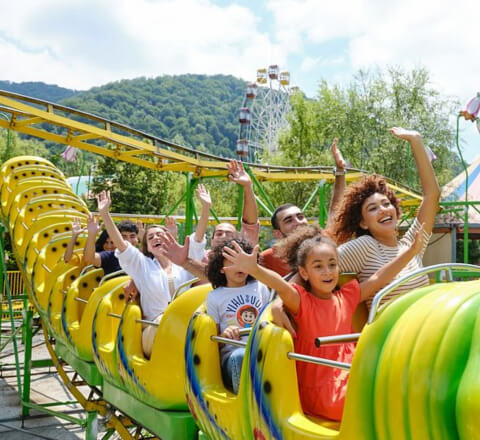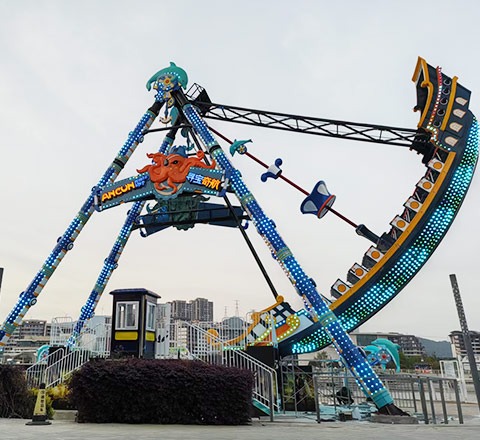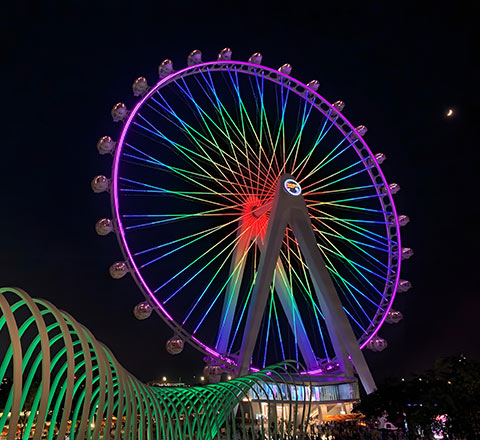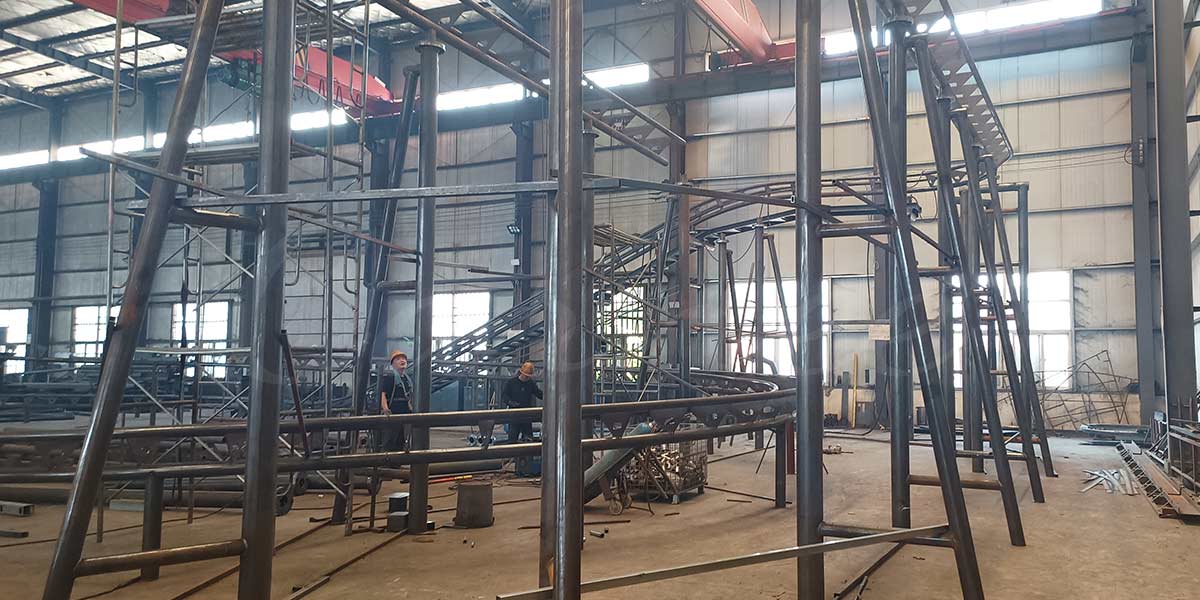
Roller coasters are the heartbeat of every theme park.
They attract thrill-seekers, families, and anyone who loves that mix of fear and fun.
As one of the 10 Classic Amusement Park Rides, roller coasters have become the ultimate icon of excitement—blending adrenaline, engineering, and pure joy.
But if you’ve ever wondered how they work, how safe they are, or how much it costs to build a roller coaster, you’re in the right place.
With over 20+ years as a roller coaster manufacturer, we’ve gathered the most asked questions from park owners, operators, and enthusiasts.
Here’s your complete guide.
1. Basics of Roller Coasters
What is a Roller Coaster?
A roller coaster is an amusement ride that uses gravity, speed, and carefully engineered tracks to create thrills. Riders experience drops, twists, loops, and G-forces—all while staying completely safe.
Who Invented Roller Coasters?
The origins trace back to Russia in the 17th century, with ice slides that evolved into the “Russian Mountains.” The first true roller coasters were built in France in the 1800s, and the U.S. popularized them in the late 19th century.
What Are Other Names For Roller coasters?
They’re often called coasters, thrill rides, big dippers, or, in French, montagnes russes (Russian mountains).
2. Types and Records
What are the Main Types of Roller coasters?
- Wooden coasters
- Steel coasters
- Inverted coasters
- Launch coasters
- Hyper and giga coasters
👉 See our full breakdown in Types of Roller Coaster: A Manufacturer’s Easy Guide & Comparison Chart.
What is a Hyper Coaster?
A hyper coaster is any coaster taller than 200 feet, focusing on airtime and speed rather than inversions.
How tall, how fast, how many inversions—who holds the records?
- Tallest: Kingda Ka (U.S.) at 456 ft
- Fastest: Formula Rossa (UAE) at 240 km/h
- Most inversions: The Smiler (UK) with 14
👉 More fun records in Fun Facts About Roller Coasters.
What is the Best Roller Coaster in the UK?
Many consider Nemesis at Alton Towers or The Smiler as the UK’s best.
What is the Fastest Roller Coaster in the UK?
Stealth at Thorpe Park reaches 80 mph in just over 2 seconds.
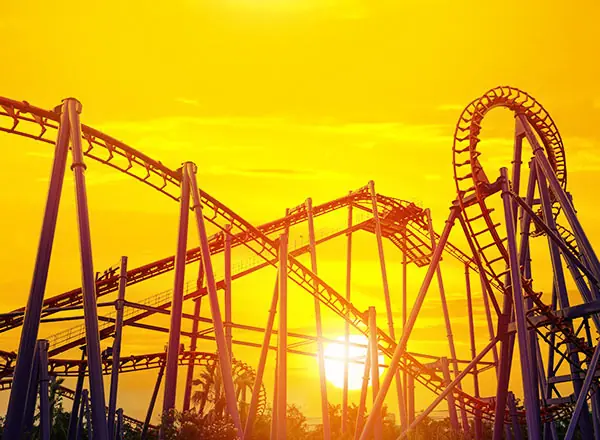
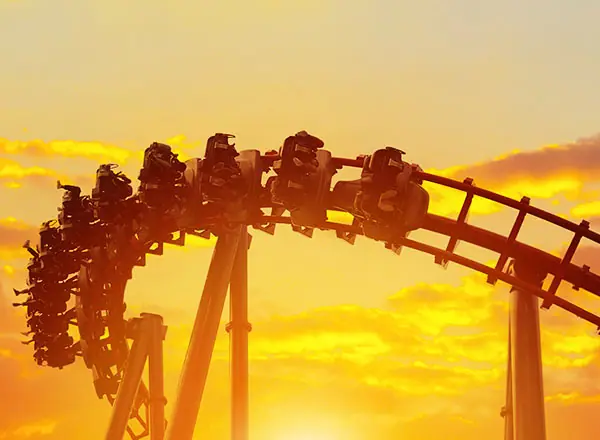
3. How Roller Coasters Work
How does a roller coaster work?
Roller coasters use gravity, kinetic energy, and precise engineering. A chain lift or launch system builds potential energy at the start, and the ride releases that energy throughout the track.
👉 Full guide: How a Roller Coaster Works.
What are the critical components?
- Track
- Train (cars + seats)
- Lift or launch system
- Braking system
- Control system
- Support structure
What materials are used—and why?
- Steel → flexible, allows loops and twists
- Wood → classic, rougher ride feel
- FRP (fiberglass-reinforced plastic) → used for seats, decorations, and durability
👉 Read more in Inside Roller Coaster Construction.
4. Safety First
How safe are modern roller coasters?
Extremely safe. Millions of riders enjoy coasters each year with very few incidents—statistically safer than driving a car.
Are roller coasters bad for your health?
For healthy riders, no. But those with heart conditions, high blood pressure, or back problems should avoid them.
What new safety features are common today?
- Over-the-shoulder restraints
- Magnetic brakes
- Redundant safety sensors
- Emergency evacuation platforms
How do anti-collision “block” systems work?
The track is divided into “blocks.” Only one train can occupy a block at a time, preventing collisions.
How do safety ratchets (“anti-rollback”) work?
As the train climbs, a ratchet clicks into place—so if the chain fails, the train won’t roll backward.
How do roller coaster brakes work?
Modern rides use magnetic brakes for smooth and fail-safe stopping.
What Are The Safety Requirements For The Roller Coaster?
Standards vary by country, but all include load testing, daily inspections, and emergency drills.
What Are The Quality Standards & Regulations?
CE, ISO, ASTM, and TUV certifications are common benchmarks for manufacturing and operation.
5. Ride Experience
What G-force should I expect?
Most coasters hit between 3–5 Gs. Some extreme ones can reach 6 Gs briefly.
What elements create different sensations?
- Airtime hills → weightlessness
- Corkscrews → disorientation
- Drops → adrenaline rush
- Banked turns → lateral Gs
What Makes A Successful Roller Coaster?
Balance: thrill + comfort + reliability.
Do Roller Coaster Rides Operate At Night?
Yes, many parks add special lighting for night rides.
Are roller coasters noisy?
Wooden coasters creak and rumble. Steel coasters are quieter but still generate wind and wheel noise.
How much electricity do they use?
Depends on size. A large coaster may use 1–2 MW per hour during peak operation.
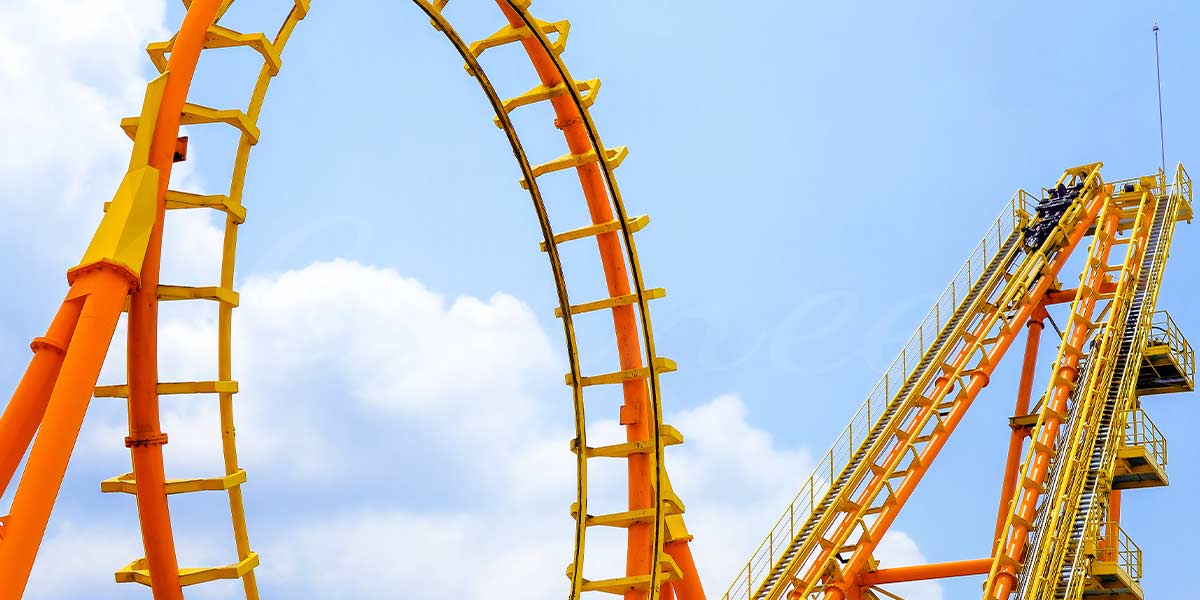
6. Building and Buying
How are roller coasters built?
Through careful design, foundation work, track assembly, and electrical integration.
How long does it take to build?
Anywhere from 12–24 months, depending on size and complexity.
How To Install a Roller Coaster?
Manufacturers provide step-by-step guidance: site prep → foundation → track installation → control systems → testing.
How much does a roller coaster cost (and what else should I budget)?
- Small coaster: $150k – $500k
- Mid-size coaster: $1m – $5m
- Major steel coaster: $10m – $50m+
Budget extra for shipping, installation, and ongoing maintenance.
What’s the rider capacity (throughput)?
From 400 riders/hour (small) to 1,800+ riders/hour (large).
What’s the maintenance schedule?
Daily inspections, monthly technical checks, yearly overhauls.
Do indoor roller coasters require special design?
Yes—ventilation, compact track layouts, and themed lighting.
Are VR/AR integrations worth it?
They can refresh an old ride, but require extra staff and cleaning.
Can I buy a small “backyard” coaster?
Mini kiddie coasters exist, but they’re still commercial-grade. Not recommended for private backyard use.
What Is The Warranty Time Of A Roller Coaster?
Typically 12–24 months, depending on the manufacturer.
7. Careers and Investment
Who Designs A Roller Coaster Ride?
Mechanical engineers, structural engineers, and ride designers collaborate.
What careers build and run coasters?
Engineers, technicians, operators, safety inspectors, and park managers.
Can I invest in a coaster—will it pay back?
Yes. Coasters are high upfront costs but drive attendance, merchandise, and food sales—making them a strong ROI for parks.
8. Learning & History
Where can I learn the history, records, and science?
Check roller coaster museums, online communities, and resources like Fun Facts About Roller Coasters.
9. Buying Checklist & Manufacturer
Quick buying checklist (save this):
- ✅ Define budget & size
- ✅ Confirm certifications (CE, ISO, ASTM)
- ✅ Choose theme (indoor/outdoor, family/extreme)
- ✅ Plan installation & maintenance
- ✅ Pick a trusted manufacturer
Why Carnee Rides?
- 20+ years in roller coaster manufacturing
- Products exported to 80+ countries
- International certifications: CE, ISO
- One-stop service: design → production → installation → after-sales
- Custom theming available
We’re not just selling rides—we’re helping you build unforgettable attractions.



